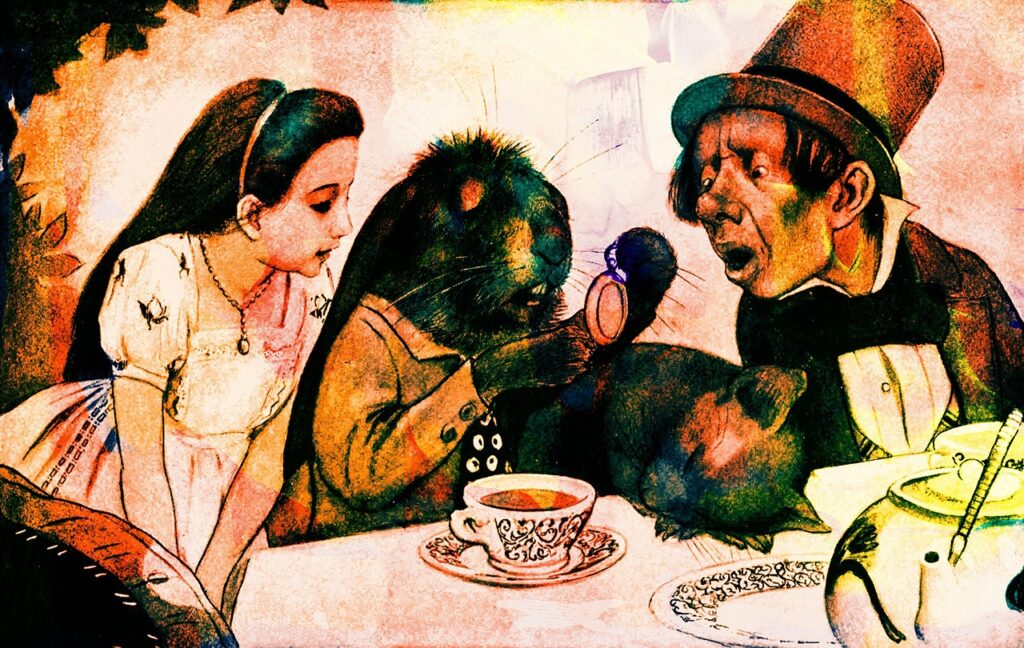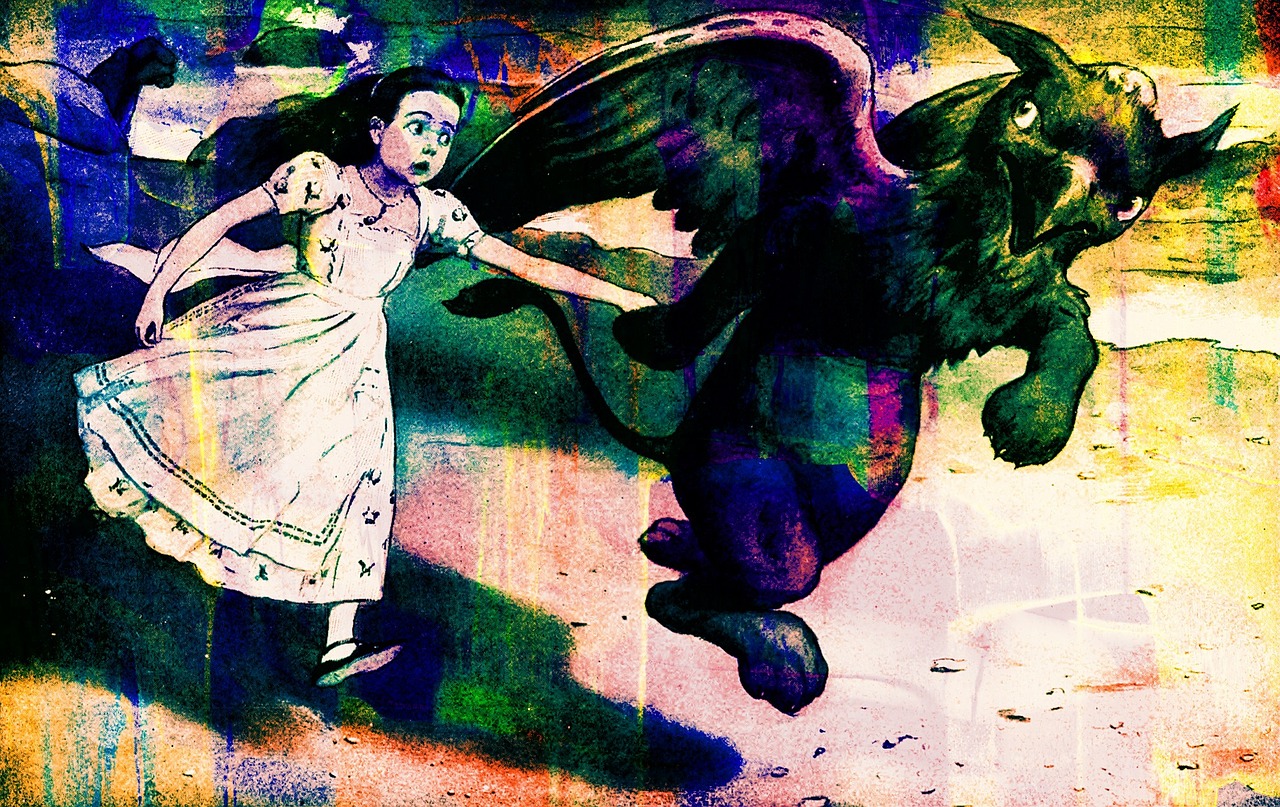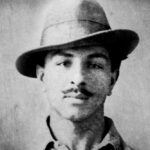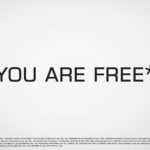Paddling through a lake with his little companion Alice Liddell, Mathematician Charles Lutwidge Dodgson told her a fascinating tale.
A tale about a girl with her name, chasing a rabbit, falling into a hole. And having all sorts of adventures in a wonderland where nothing made sense.
What do you think about Alice in Wonderland: Is It Really A Children’s Book? Let’s find out.
Before we do that let me tell you that Alice in Wonderland is the commonly preferred short form of Alice’s Adventures in Wonderland.
Alice in Wonderland: Is It Really A Children’s Book?
Alice urged Dodgson to write the story down. He did so under the nom de plume Lewis Carroll [1], which quickly became his name for centuries to come.
He wrote a sequel to Alice in Wonderland, which was ‘Through the looking glass and what Alice found there’ that also gained world popularity.
The books have also inspired mainstream pop culture, with various directors creating films based upon the books, the latest one made by Tim Burton in 2010.
However, the books are not just plainly cherished for their vivacious writing and imagination. They are also scrutinized worldwide by people trying to see a different side to the story, a remarkably darker side.
Throughout decades different theories have emerged, and all of them are bizarre. But let’s take a look at the two of the most conspiratorial themes that have sprung out for these seemingly harmless children’s books.
The book is About Drugs
If someone sees the 1951 rendition of Disney’s animated Alice in Wonderland, they would see Alice’s head dipped into a hoard of tea sugar.
Alice eating Mushrooms, Alice interacting with wild-speaking ‘flowers’, and of course, Alice coming across the most famous hookah-smoking caterpillar.
All of these sequences have been taken out of the book. And the direct references to mushrooms, hookah, wildflowers, and the ‘Eat me’ cookies, cannot be just ignored away.
Was Alice just a hallucinating girl on an overdose of drugs? Were all of those fantastic things she witnessed nothing but a result of being high?
However, to test the strength of this theory one has to put it through in Dodgson’s time. And see if the drug culture was as popular in his time for him to be influenced enough to write a children’s story with such a deep dark meaning.
And truth be told, it wasn’t. The LSD culture did not become popular until the 1960s. And that is also the time around which this conspiracy theory about Alice being on drugs emerged.
Apart from that, Dodgson was a celibate mathematician and has been described in nature as rather set in his ways. It doesn’t seem likely that the author had a hidden opium stash in his chambers, to be able to write a seemingly ‘psychedelic’ story for Alice Liddell.
However, people still believe that Alice in Wonderland had a lot more to do with drugs than we think. There is no evidence for Dodgson trying drugs.
However, it is known that the author did have some crazy homeopathic remedies. One of which included dosing himself with “aconite and arsenic” to cure a stubborn cold.

Dodgson had Paedophilic Tendencies
It is a well-known fact that the author liked spending time with young girls. He also photographed them quite a bit.
He befriended little girls on trains, beaches, and houses of friends, and had a special fondness for Alice Liddell. Who later became the inspiration that carved out his name as a famous writer for years to come.
However, many people believe that Dodgson was a pedophile, keeping in view his closeness to girls. He wrote to one 10-year-old girl, “Extra thanks and kisses for the lock of hair. I have kissed it several times – for want of having you to kiss, you know, even hair is better than nothing.”
Some argue that Dogdeson’s obsession with little girls is as sexual an obsession as a man’s with pretty porcelain dolls. However, one should not forget that in those times, men often married girls in their pre-teens. And even harbored sexual thoughts for them.
Dodgson once wrote to Gertrude Thomson, an artist who was sketching girlish fairies and nymphs, “I confess I do not admire naked boys in pictures. They always seem… to need clothes, whereas one hardly sees why the lovely forms of girls should ever be covered up.”
More to this theory
Another piece of evidence that leads up to this haunting premise is that in 1863, Carroll’s association with the Liddell family bafflingly ended following quite a while of dear companionship. He in the end continued correspondence with Henry and his wife. But, their children never again spent time with the author. The reason seems suspicious.
There is also a page missing from his journal that year, which some accept examines the reason for dropping out. It has been estimated before that Carroll proposed to Alice. An aggravating probability, yet not incredible at the time when the age of consent was 12. And men every now and again wedded extremely young ladies.
In the End
However, there are equal believers of the book’s innocence, as there are people who engage in such conspiracy theories.
The truth, however, is only up in speculation’s hands. One fact that cannot be denied though is that Carroll’s books and the mainstream Alice that they inspired are extremely entertaining and colorful, for adults and children alike.
Looks like Alice in Wonderland may not be a children’s book after all.
More to read:
Why Did Sirius Black Choose A Black Dog As His Animagus Form?




